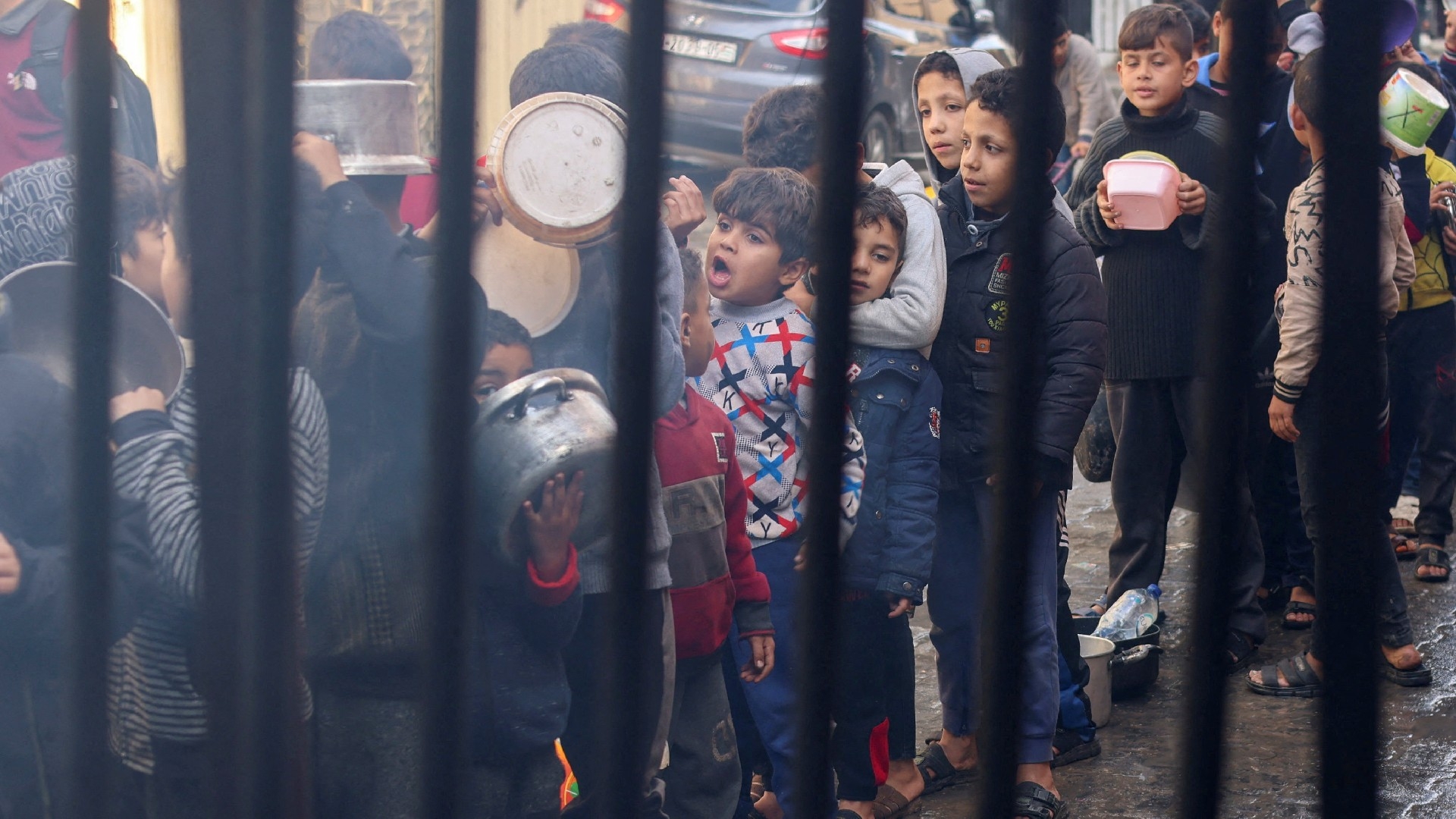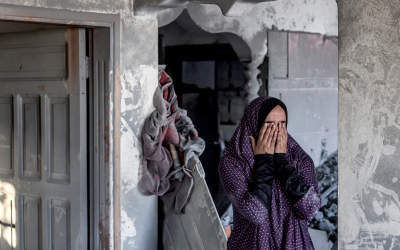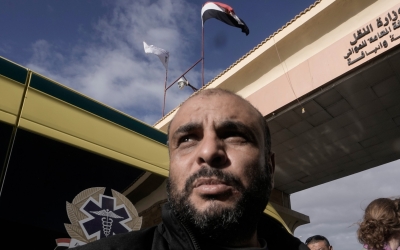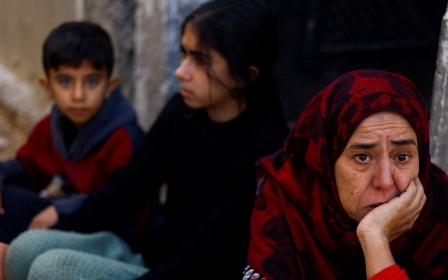War on Gaza: Besieged strip on the verge of 'famine', UN says

A UN report has found that Gaza's entire population is facing acute food shortages, with the besieged enclave at risk of famine if the Israeli onslaught continues into February.
The percentage of families in Gaza experiencing severe acute food insecurity is the highest ever documented worldwide, outranking Afghanistan and Sudan, figures in the report published on Thursday by the Integrated Food Security Phase Classification (IPC) show.
The UN’s hunger monitoring body said “virtually all” households in the Gaza Strip are skipping meals daily, with four out of five households in the north and half of displaced households in the south going entire days without eating.
The IPC has a five stage metric for assessing food crises. Between 24 November and 7 December, 90 percent of Gaza’s population was estimated to face high levels of acute food insecurity, classified at “crisis or worse” level, of IPC Phase 3, defined as "above usual acute malnutrition".
The report warned that if Israeli hostilities were to continue, “the entire population in the Gaza Strip [about 2.2 million people] would be at 'crisis or worse' levels of hunger by 7 February”. From the period 7 December to 7 February, the report projected that 53 percent of Palestinians in Gaza will reach the “emergency” phase of hunger, defined as "very high acute malnutrition and excess mortality".
New MEE newsletter: Jerusalem Dispatch
Sign up to get the latest insights and analysis on Israel-Palestine, alongside Turkey Unpacked and other MEE newsletters
At least one in four households (26 percent) are predicted to be in “hunger catastrophe”, the most severe stage, indicating starvation and death.
This would make Palestinians the population with “the highest share of people facing high levels of acute food insecurity that the IPC initiative has ever classified for any given area or country”, the report said.
Follow Middle East Eye's live coverage of the Israel-Palestine war
Amid the relentless Israeli onslaught on the besieged strip that began on 7 October, Gaza now tops the IPC’s list of countries suffering from acute food insecurity.
It is followed by Afghanistan where 29 percent of the population face high levels of acute food insecurity, classified as IPC Phase 3, and Sudan where conflict has driven around 37 percent of the population into “crisis” levels of acute food insecurity, also classified as IPC Phase 3.
Inadequate aid
The report comes as the stalled vote on a UN Security Council resolution to boost the flow of humanitarian aid to the Gaza Strip is expected on Friday.
The vote has been repeatedly postponed as the United States wanted to dilute the draft resolution’s language calling “for an urgent and sustainable cessation of hostilities”.
The IPC report found that “extremely inadequate” quantities of aid were reaching the strip since Israel’s imposition of a “total blockade” on Gaza on 9 October.
Prior to the current Israeli assault on the besieged enclave, 1.2 million of Gaza’s 2.2 million population were already estimated to be facing acute food insecurity, with 80 percent subsisting on humanitarian aid.
The Rafah crossing between Gaza and Egypt, the only gateway in and out of the strip not controlled by Israel, has been subject to tight restrictions and multiple Israeli air strikes since 7 October, creating a bottleneck of aid trucks at the border.
As of 21 October, limited humanitarian aid has been allowed to trickle through the crossing.
According to the UN's Office for the Coordination of Humanitarian Affairs, OCHA, only 100 trucks cross Rafah into Gaza daily, half the number recommended by the UN.
Before the current hostilities began, 500 humanitarian aid trucks used to enter the strip daily, according to the World Health Organisation (WHO).
While Israel has said it will set up additional inspection checkpoints for aid trucks, it has ruled out the opening of other crossings into the besieged strip.
A weapon of war
The report concluded that “hostilities” are the main driver of acute food insecurity levels in the besieged Palestinian enclave.
Armed conflict has been a primary driver of acute food insecurity globally since 2017. In 2021, seven out of the world’s 10 largest food crises were conflict-induced.
A Human Rights Watch report on 18 December found that Israeli forces are weaponising starvation as part of the war on Gaza, and that this constitutes a war crime.
In 2018, the UN security council unanimously adopted a resolution that recognised the link between conflict and hunger and “strongly condemned” starvation as a method of warfare.

According to Oxfam, months of relentless Israeli bombardment, along with fuel and water shortages, have made farming in the strip nearly impossible and brought bakeries, grain mills and water sanitation facilities to the point of collapse.
On 28 November, OCHA said water shortages were leaving livestock on the verge of starvation and crops damaged, while the Palestine Food Security Sector reported that over a third of agricultural land in the north of Gaza had been damaged in the hostilities.
On 15 November, Israeli forces bombed Gaza’s last operational wheat mill.
On 16 November UN experts said the damage inflicted on civilian infrastructure “threatens to make the continuation of Palestinian life in Gaza impossible”.
Aleema Shivji, Oxfam’s acting chief executive condemned Gaza’s descent into starvation as “so predictable as to be premeditated”.
“This is irrefutable proof that Israel’s attacks have decimated Gaza’s already fragile food system so catastrophically that most people are no longer able to feed themselves and their families,” she said in a statement.
Middle East Eye delivers independent and unrivalled coverage and analysis of the Middle East, North Africa and beyond. To learn more about republishing this content and the associated fees, please fill out this form. More about MEE can be found here.





